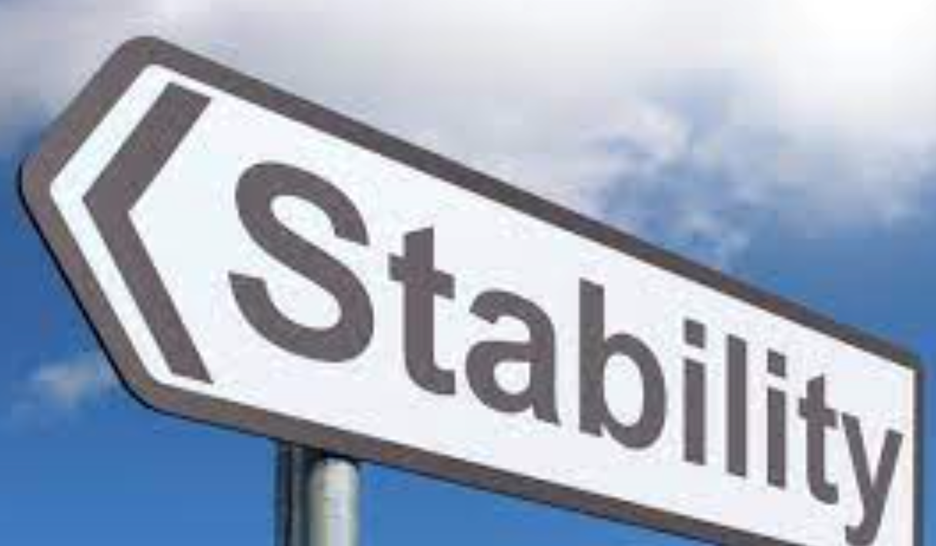Gauging the stability of a business can be tricky. Strong financial performance, high profit margins, and healthy balance sheets can create the illusion of stability, but these indicators alone may be masking underlying risks and vulnerabilities. Believing your business is stable based only on these indicators can provide a false sense of security among business leadership and can lead to complacency on the shop floor. Success can hide risk.
Stability is the foundation of practically every production metric… cycle time, lead-time, OEE, fulfillment rate – all depend upon stability. A lack of basic stability prevents improvements from either taking place or being sustained – continuous improvement is impossible without a stable process. Add to that, the fact that we tend to tolerate poor performance in the absence of a squeaky wheel, and you find that no squeaky wheel is a signal worth investigating.
How should a business gauge stability? Many people (and lots of engineers) tend to mistakenly connect stability with a high quality rating or fulfillment rate, but stability is so much more than that. You first need to recognize that stability has three separate components – predictability, sustainable outcomes, and consistent processes, and you need to realize that stability requires all three.
Predictability: Let’s say a manufacturer can’t or doesn’t measure OEE for their processes – without it, no prediction can be made for the output and the process is unstable. Here’s another example – you talk with the CFO on the 25th of the month and they share that the company is on course to hit their plan for the month, but five days later you find they have missed the plan by 20%. Not predictable, not stable.
Sustainable Outcomes: A sustainable outcome is one that continues to meet customer demands – quality is high enough, fulfillment rates meet demand, and cost is low enough. If lead times for a company are growing, they may eventually start losing orders because of it, at which point it becomes an unsustainable outcome. Sustainable outcomes are the result of robust systems that can respond to ever-changing market, supply chain, and employment needs, to name a few.
Consistent Processes: Consider this – at the end of an operation, employees conduct a final visual inspection and box up the items. Each employee chooses the process they wish to use, and no employee has the same output as the others. But there’s one employee who was clearly inspecting and packaging twice as much product as anyone else, but because everyone could choose to do it their own way, the impact of any good work was negligible. If everyone were to follow the process used by the best operator, productivity would increase and production costs would be reduced.
If we’re all in agreement that predictability, sustainability, and consistency are the core requirements for stability, how does instability manifest itself in operations? Here are a few indicators of instability:
Efficiency and Productivity: An operation isn’t stable if the output changes each time there’s a change in employees, shift, production line, supervisor, or facility.
Quality Control: An operation isn’t stable if you have to sort the outcome, inspect quality into the product, or if you’re not tracking rework and scrap.
Cost Control: An operation isn’t stable if lead times are growing, parts are unavailable, or if absenteeism continues to be a problem.
Compliance and Regulation: An operation isn’t stable if a product (like a safety harness) fails to perform to specification, or if employees are at risk of injury.
Risk management: An operation isn’t stable if any of the following risk conditions go unaddressed –
- If your company is growing but your margins start to decrease when new products are added, or if you have anyone in management who doesn’t take off more than a day at a time, your operation is not stable (tribal knowledge risk)
- If you don’t have a thoughtful hedging strategy or a history of passing on pricing increases to customers, your operation is not stable (margin compression risk)
- If you don’t have alternate sources for your materials, or a secondary port of entry negotiated in your supply chain, or a disaster recovery plan, your operation is not stable (business interruption risk)
- If your Emod rate (or EMR) is above 1.00 or if you don’t know what your Emod rate is, your operation is not stable (safety risk)
- If your maintenance department spends more than 15% of their time on reactive maintenance, your operation is not stable (CAPEX risk)
- If you don’t know your churn/loss rate, or which of your customers are vulnerable, your operation is not stable (customer loyalty risk)
Perhaps the greatest benefit of stability (predictable processes) is the ability to scale and grow your business. When businesses have established and repeatable processes, they can more easily replicate and scale their operations. This is particularly important when expanding into new markets, introducing new products or services, or onboarding new employees.
At The ProAction Group, we help businesses create reliable processes. We work with leadership, management, and the employees on the floor to raise awareness for business stability and its connection to predictability, sustainable outcomes, and consistent processes. Verifying the presence of these components in your processes is the key to true business stability.

